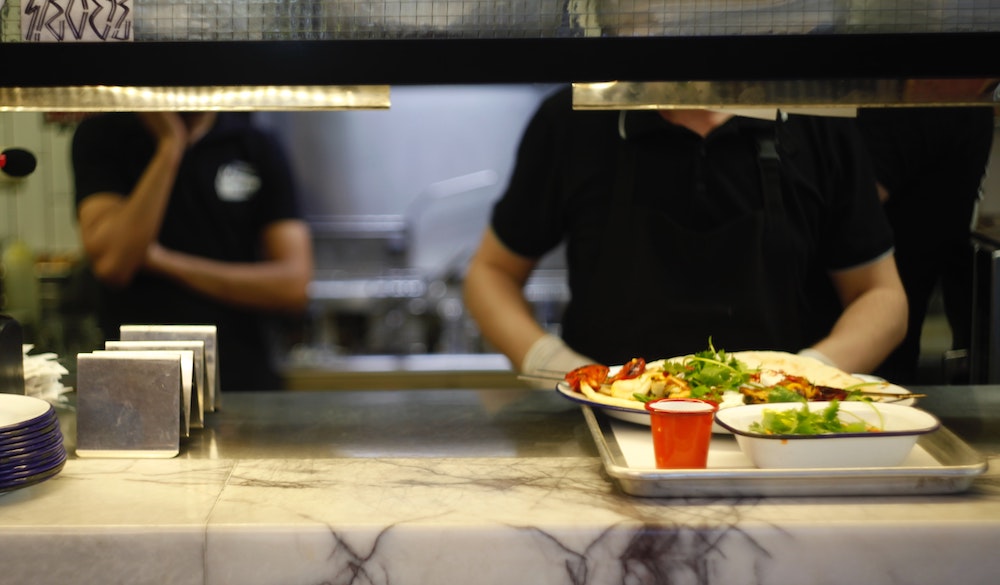The school district is working to adapt its food service operations to comply with new state legislation that requires all public schools to implement a universal free meal program for students starting this fall. Providing free breakfast and lunch to all students will be a new model for Piedmont, which has until now has offered food for purchase via an outside vendor at the elementary level and through an on-site kitchen at the secondary schools. The school district says that to be National School Lunch Program (NSLP)-compliant will require a shift in what meals are provided, how food is procured, and how it is served. The universal school meals program is part of the state budget agreement reached between Gov. Gavin Newsom and the legislature in 2021. In July 2021, California was the first state in the country to promise free meals to all students. Many districts are already providing free meals this year.
Because the level of state reimbursement for each meal per student is relatively low — around $2.60 for breakfast, $4.60 for lunch and a $1 for snacks — PUSD’s Chief Financial Officer Ruth Alahydoian told the Board of Education last week that it may take some time to figure out exactly how the new program will impact the district’s food service budget. “We’ll have to see how it goes and make adjustments as soon as we can early in the [school] year,” she said at the March 23 board meeting, noting that this is not a program PUSD can simply “opt out of”. She said the district will also have to take on new reporting procedures as each free meal must be tracked in order to receive reimbursement from the state.
“This is not a ‘cost-neutral’” proposal, noted Board President Cory Smegal. The full budget impact of transitioning to the new “free lunch” model isn’t immediately clear, but Alahydoian told the board that staff time and other costs may be as high as $200,000, funds that could be drawn from the budget’s “cafeteria fund” that has historically been used for equipment purchases.
Under the new rules, PUSD elementary schools will have to re-evaluate and choose a food vendor through a formal bidding process (RFP). The District currently contracts with a vendor to provide hot and cold lunches daily. Parents sign up each week for the items they want in their students’ lunches and pay accordingly. The lunch entrees cost $5.50-$6.50 plus an additional $1.00 added as a fundraiser for the District. Drinks, snacks, fruit and other sides are an additional cost as a la carte items. The entire program is run by parent volunteers. The District generates approximately $40,000 per year from the extra dollar per meal. The funds go into the Cafeteria Fund and cover a portion of the salary for instructional paraeducators who do lunch duty.
At the secondary level, PHS Nutrition Director and Executive Chef M’Lisa Kelley leads a food service team that prepares and serves brunch and lunch items daily to all secondary students. Everything is served “a la carte” – students select what items they want. Brunch items range from $2.00-$4.00 and lunch items are $3.00-$7.50. Parent volunteers and students who are part of the Culinary Arts class work alongside district staff to serve.
Kelley has been working with her staff for months to develop new menu items that both meet strict nutritional guidelines and fit within the reimbursement figures. (Board members sampled one of the options, a farro salad, at the meeting.)
Under the new program, schools must offer a breakfast that includes a cup of fruit, cup of milk, and 1-2 ounces of whole grain. For lunch, meals must have a serving of fruit, vegetable, whole grain, meat or meat alternative, and whole milk. The challenge for the school, Alahydoian said, is to figure out how to maintain food quality while adhering to budget and nutritional guidelines. That may come down to fewer options than what secondary school students are used to.
“We may not have as many options as we currently have. Snacks and a la carte items may still be available for purchase, but we may not have the variety we currently have. Part of that is on the cost side … [we purchase] one flavor of chips versus a variety,” Alahydoian said, giving an example of where they may find cost-saving opportunities.
“I have a lot of faith in our staff,” said Superintendent Randy Booker, speaking to the challenges of modifying the food program at the secondary level. “They know our kids, they pay attention to their habits and they don’t want to waste food or money.”
Kelley and her team will be testing some of the new menu items on campus at a “Free Food Fest” in late April.
